Painting Closing Time: A Family Portrait
A step-by-step tutorial from the artist, Bob White
A step-by-step tutorial from the artist, Bob White
Bob White is a contributing artist for Ducks Unlimited magazine and has provided accompanying illustrations for the "Closing Time" column since 2007. These DU Newsletter exclusive features will detail White's approach to each illustration and provide an in-depth look at White's passion for waterfowl, conservation, and art.
By Bob White
One of my current assignments for Ducks Unlimited magazine is to create an illustration for the "Closing Time" column. This particular column is about the value of hens, and why we should cherish them. I wanted to paint a hen mallard with her brood, but didn't have the right photographic reference. So, I approached Minnesota photographer Michael Furtman for help.
I know Michael's work well, as he publishes in Ducks Unlimited and Minnesota Conservation Volunteer magazine, among many others. Over the years, I've actually painted to illustrate several feature articles he's written.
Michael very generously allowed me to choose from a gallery of his images, and this is the image I chose to paint from. Below you'll be able to see the process from start to finish.

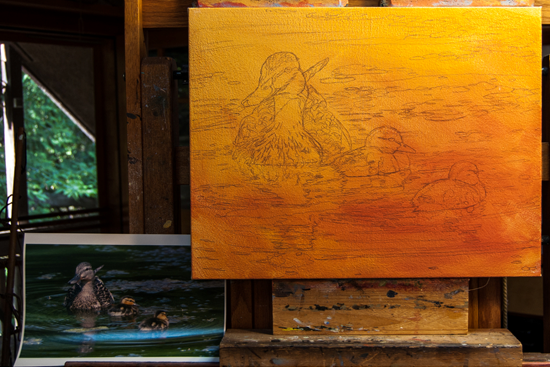
Session 1: Transfer the image to stretched canvas that's been primed with Naples yellow and Alizarin crimson.

Time to get some brushes dirty...
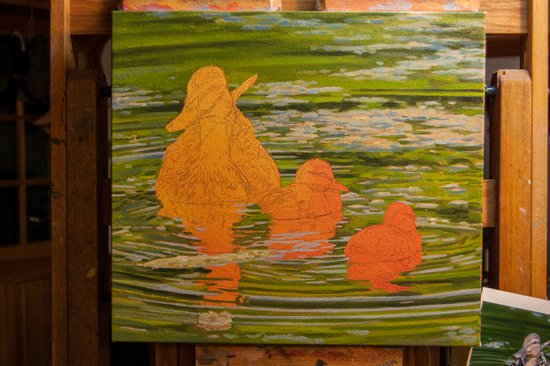
Session 2: Background: Painting the water and reflections of light on the water's surface.
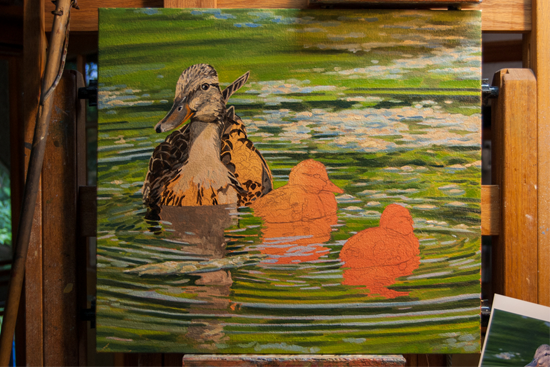
Session 3: Blocking the mallard hen: Trying to get the color, and most importantly the values, right.

Session 4: Finishing the rough-in of the mallard hen. Sometimes the reflections are more difficult than the subjects that reflect them.

Session 5: Painting the ducklings requires a shift in brushwork to render the soft edges of their downy new plumage.
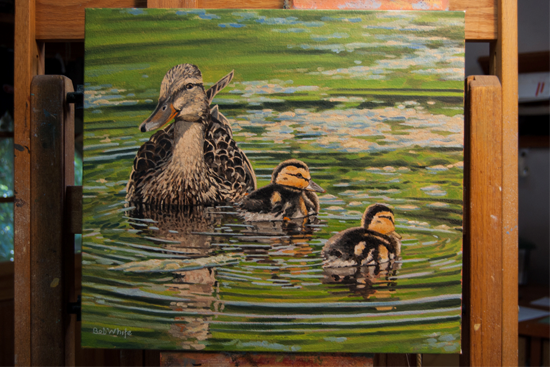
Session 6: The ducklings are completed with a careful rendering of their eyes. Much can be left to an artists' interpretation, but the eyes have to be right, as they determine the attitude of the individual birds.
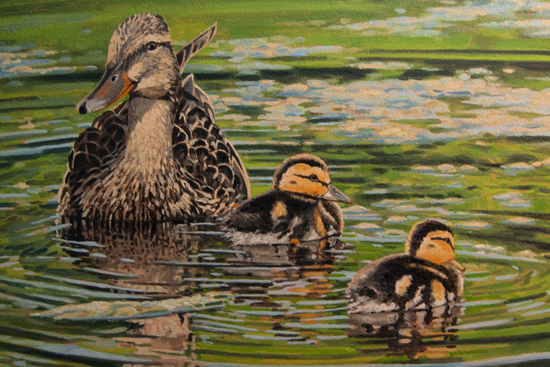
Session 7: A lot of fussing with the most difficult aspect of the painting: the reflections: Too busy and they become distracting, too loose and they aren't believable.
One thing about reflections that few people notice until they try to render them accurately: the value of a reflection is always a step or two darker than the object that is reflected.
Finished!
Ducks Unlimited uses cookies to enhance your browsing experience, optimize site functionality, analyze traffic, and deliver personalized advertising through third parties. By continuing to use this site, you agree to our use of cookies. View Privacy Policy